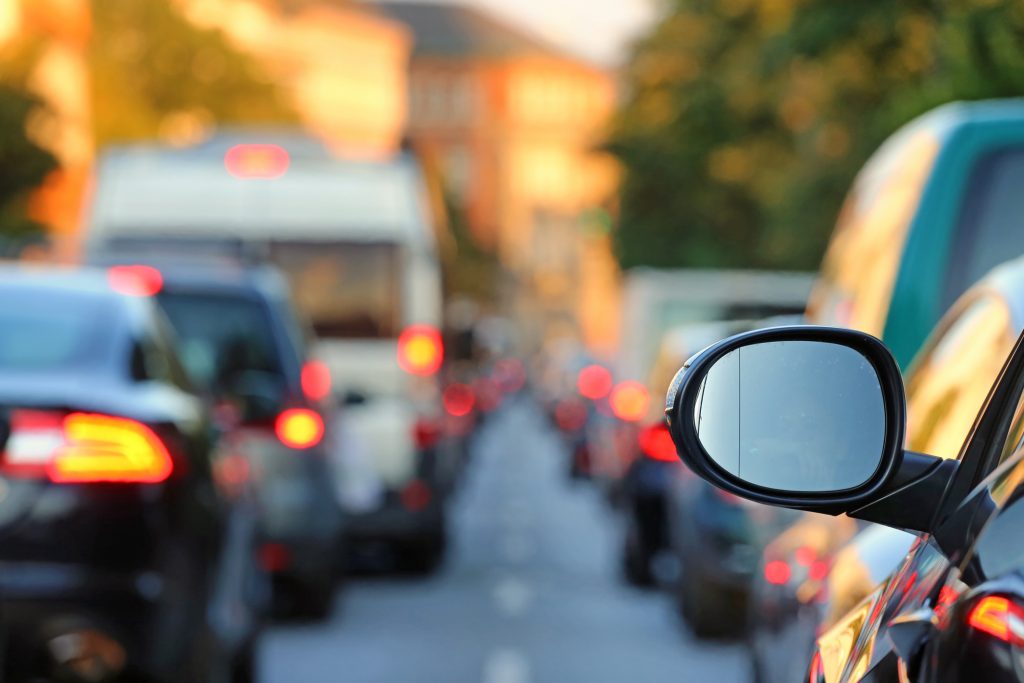Understanding right-of-way laws in California is critical for the safety of all roadway users. The right-of-way is the legal right to proceed or move forward in traffic without having to stop for other motorists, bicyclists or pedestrians. Knowing and obeying the rules about who has the right-of-way in California can help you stay safe and avoid causing a car accident in Los Angeles.

Who Has the Right-of-Way at Intersections?
An intersection is where two or more roads intersect. A controlled intersection has a traffic control signal (stoplight) or stop signs, while an uncontrolled intersection does not. At a stoplight-controlled intersection in California, the party with the right-of-way is the one that is faced with a steady green light.
At a red light, a driver must wait for other drivers, as well as bicycle or pedestrian traffic, to proceed (California Vehicle Code [CVC] § 21802). If the intersection has a stop sign or is uncontrolled, the vehicle or individual that arrives first has the right-of-way.
When making a left turn at a traffic-control signaled intersection, a driver with a steady green light (not a green arrow) must yield the right-of-way to oncoming traffic. This includes pedestrians who are crossing the destination street. A driver must continue to yield the right-of-way to oncoming traffic until the left turn can be made with reasonable safety.
When Do Pedestrians Have the Right-of-Way in California?
At crosswalks in California, pedestrians have the right-of-way. CVC § 21950 imposes a duty on all motor vehicle drivers to yield the right-of-way to pedestrians crossing the road within any marked crosswalk or unmarked crosswalk at an intersection. A driver must come to a complete stop at a crosswalk to allow a pedestrian who is in his or her half of the roadway to cross.
However, pedestrians are not automatically granted the right-of-way at all intersections in California. If an intersection has a pedestrian signal, anyone on foot must wait for the “Walk” signal to cross the road. Pedestrians also have a responsibility to use due care for their own safety. CVC § 21950(b) states that a pedestrian may not leave a curb or another place of safety and walk into the path of a vehicle that is so close as to constitute an immediate hazard. Speak to a Los Angeles pedestrian accident attorney for more information.
Special Rules for Unique Intersections
California has specific right-of-way rules for certain types of roads. At a T-shaped intersection that does not have a stop or yield sign, for example, any vehicle that is proceeding on the through road is given the right-of-way. Other motorists, bicyclists and pedestrians must wait for the person who has the right-of-way.
Emergency Vehicles Have the Right-of-Way
If an emergency vehicle is approaching while flashing its lights or using its siren, all surrounding traffic must yield the right-of-way. CVC § 21806 states that upon the immediate approach of such vehicle, surrounding traffic must drive to the right-hand edge or curb of the road, clear of any intersection, and remain stopped there until the emergency vehicle has passed.
If a motor vehicle driver or another party violates California’s right-of-way laws, it can lead to a harmful accident. In this scenario, the party with the responsibility to yield the right-of-way could be held accountable for a victim’s medical bills and other losses. Contact a Los Angeles injury attorney to discuss a specific case in more detail.